Last updated on
Discover the benefits and drawbacks of in-drawer and countertop knife storage as we delve into their differences, helping you make an informed decision for your kitchen.
As a home decorator, I’ve seen many kitchens in my time. And one thing that always catches my attention is how people store their knives.
Some prefer to keep them in a countertop block, while others opt for an in-drawer storage solution. But which method is better? As someone who has worked with countless homeowners and their kitchens, I’m here to break down the pros and cons of each approach so you can make an informed decision about how to store your knives.
So let’s get started!
Key takeaways:
- In-drawer storage keeps countertops clear and improves safety.
- Countertop storage provides easy access but takes up counter space.
- In-drawer storage protects knives but can be less organized.
- Countertop storage adds style but requires regular cleaning.
- Consider space, safety, hygiene, and accessibility for both options.
What's Inside
In-Drawer Knife Storage
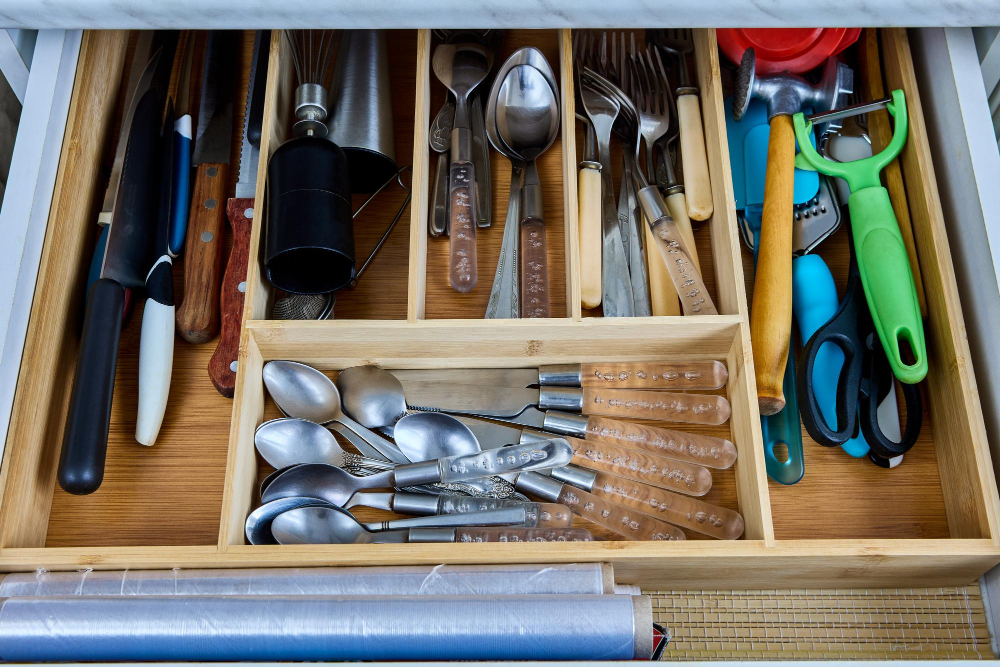
In-drawer knife storage is a popular option for those who want to keep their knives out of sight and off the countertop. This method involves storing your knives in a designated drawer, usually with slots or compartments that hold each knife securely in place.
One of the biggest advantages of this approach is that it keeps your countertops clear, giving you more space to work with when preparing meals.
Another benefit of in-drawer storage is safety. By keeping sharp blades tucked away inside a drawer, you reduce the risk of accidentally cutting yourself while reaching for something else on the counter.
However, there are also some drawbacks to consider before opting for an in-drawer solution. For one thing, it can be difficult to quickly identify which knife you need without having them all laid out on display like they would be with countertop storage.
If not properly organized and maintained over time (e.g., sharpening), knives may become dull or damaged due to rubbing against each other within their compartmentalized spaces.
Countertop Knife Storage
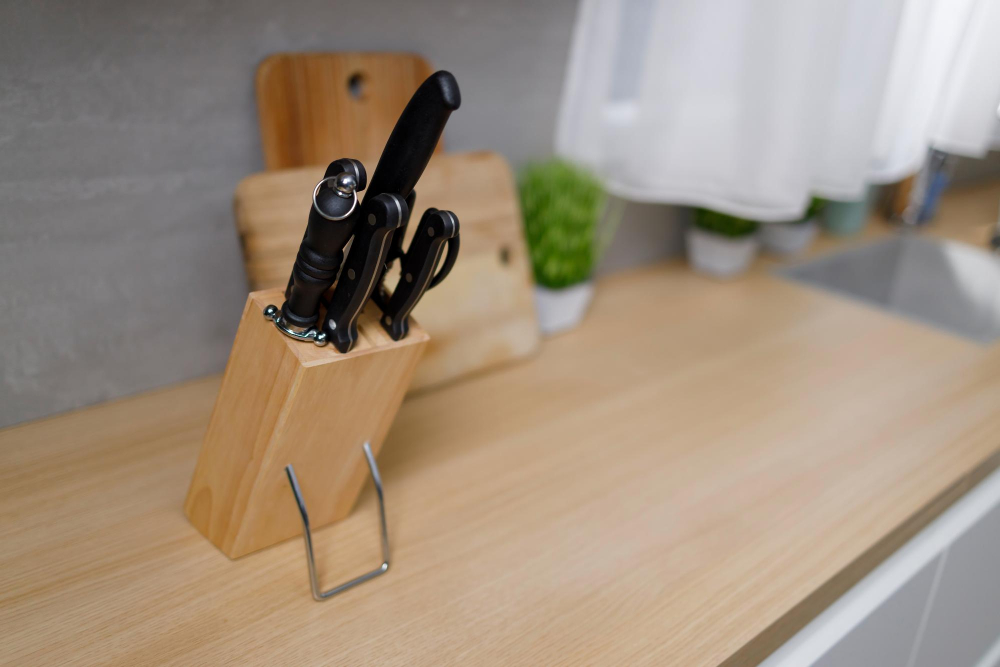
It’s convenient, easy to access, and can add a touch of style to your kitchen. However, there are also some drawbacks to this method of storing knives.
One major concern with countertop knife storage is safety. If you have young children or pets in the house, leaving sharp knives out on the counter can be dangerous.
If you’re not careful when reaching for a knife or putting one back in its slot, you could accidentally cut yourself.
Another consideration with countertop storage is space utilization. A bulky block takes up valuable counter space that could be used for other purposes such as food preparation or serving meals.
Lastly but importantly hygiene and maintenance should also be considered when it comes to countertop knife blocks since they tend to accumulate dust and debris over time which may affect their cleanliness level especially if left unattended for long periods of time without proper cleaning routines put in place.
Pros and Cons: In-Drawer
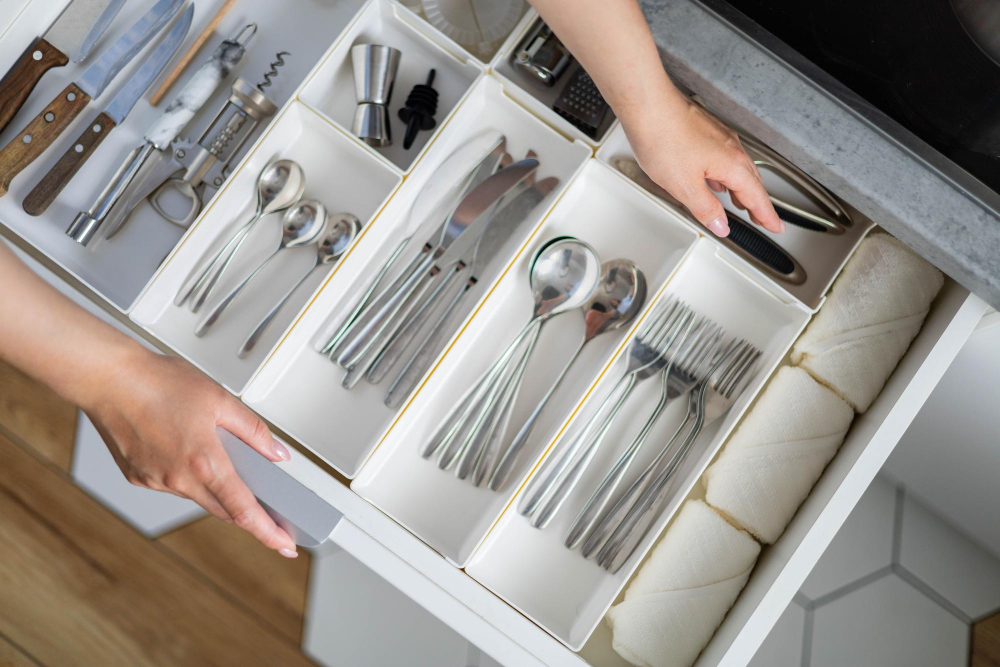
One of the biggest advantages of in-drawer storage is that it frees up valuable counter space, which can be especially important in smaller kitchens. Storing your knives in a drawer can help protect them from damage and keep them sharp for longer.
However, there are also some drawbacks to consider when it comes to this method. For one thing, if you have a lot of knives or other utensils stored in your drawers alongside your cutlery, finding what you need quickly can become challenging.
Another potential issue with this approach is safety; if you’re not careful when reaching into the drawer or removing items from it, you could accidentally cut yourself on one of the blades.
Pros and Cons: Countertop
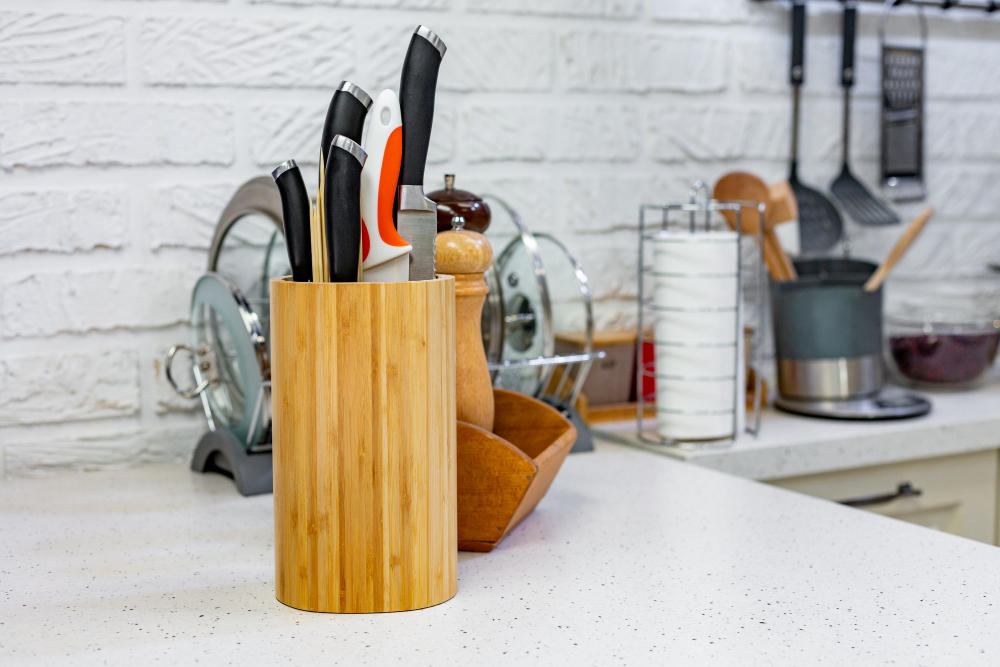
It’s convenient, easy to access, and can be an attractive addition to your kitchen decor. However, there are also some drawbacks to this method of knife storage.
One of the biggest advantages of countertop knife blocks is their accessibility. You can easily grab the right tool for any job without having to rummage through a drawer or cabinet.
They come in various sizes and styles that can complement your kitchen design.
On the other hand, one major drawback with countertop storage is that it takes up valuable counter space which could be used for food preparation or other tasks in smaller kitchens where every inch counts.
Another disadvantage is hygiene; knives stored on countertops are exposed to dust particles and cooking debris which may compromise their cleanliness over time if not cleaned regularly.
Last but most importantly safety should always be considered when storing knives on countertops, especially if you have children around as they might accidentally knock them off causing injury.
Safety Considerations

In-drawer knife storage can be an excellent option for households with young children or pets as it keeps sharp blades out of sight and reach. However, if you’re not careful when opening the drawer, you could accidentally cut yourself on the exposed blade.
On the other hand, countertop knife blocks are more visible and accessible but may pose a risk to curious little hands or paws. If you have small children in your home who like to explore every nook and cranny of your kitchen counters, then keeping sharp objects within their reach might not be ideal.
Space Utilization
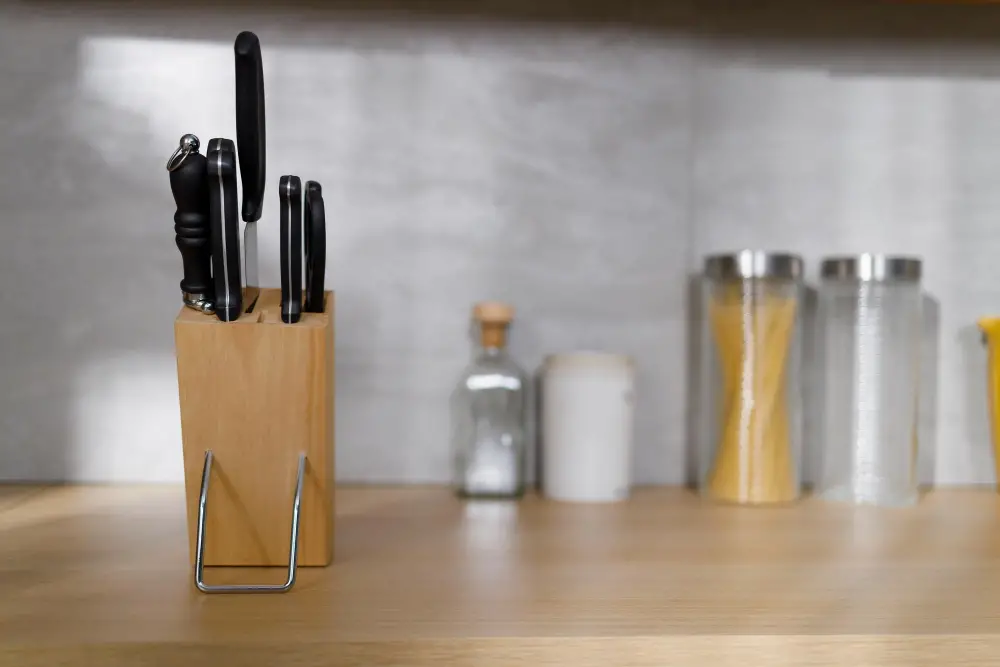
Countertop knife blocks can take up valuable counter space and make your kitchen feel cluttered. On the other hand, in-drawer knife storage allows you to keep your knives out of sight and free up countertop real estate.
If you have limited counter space or prefer a minimalist look in your kitchen, then an in-drawer solution may be the way to go. It’s also worth noting that some countertop blocks can be quite large and bulky, making them difficult to move around or store away when not in use.
However, if you have ample counter space or want easy access to your knives while cooking, then a countertop block might work better for you. They come in various sizes and styles so that they can fit any aesthetic preference.
Maintenance & Hygiene
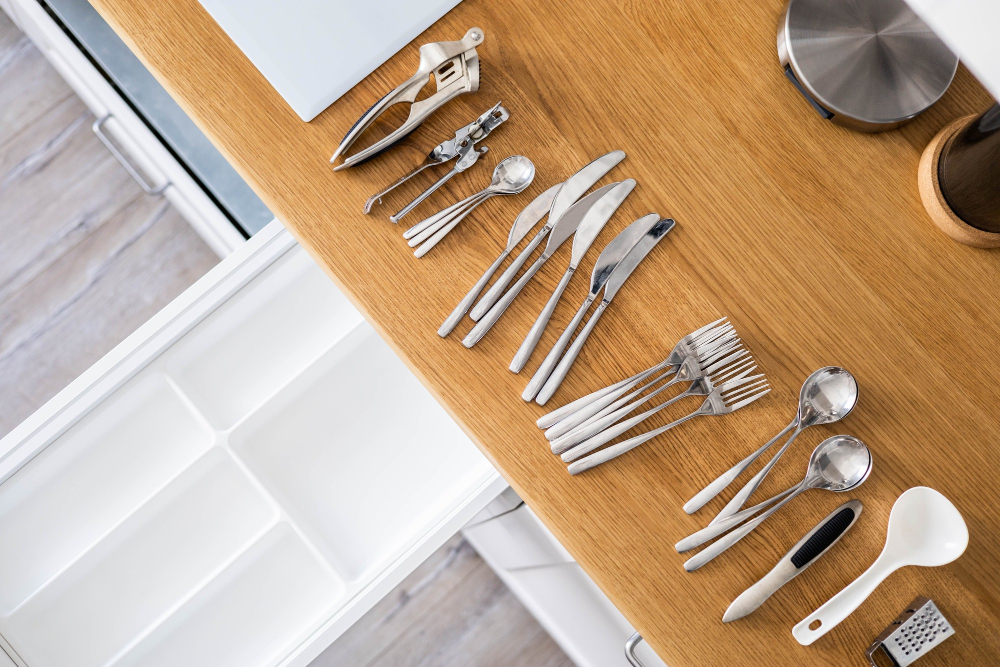
In-drawer knife storage can be a bit more challenging in terms of upkeep since the knives are not as easily accessible for cleaning. However, if you have a designated drawer for your knives that is lined with an anti-bacterial material like cork or bamboo, this can help keep them clean and hygienic.
On the other hand, countertop knife blocks may accumulate dust and debris over time if left uncovered. It’s important to regularly wipe down both the block itself as well as each individual slot where your knives rest.
Regardless of which method you choose, it’s essential always to keep your knives clean before storing them away. This means washing them thoroughly after each use with warm soapy water and drying them completely before putting them back into their respective slots or drawers.
Aesthetics & Accessibility
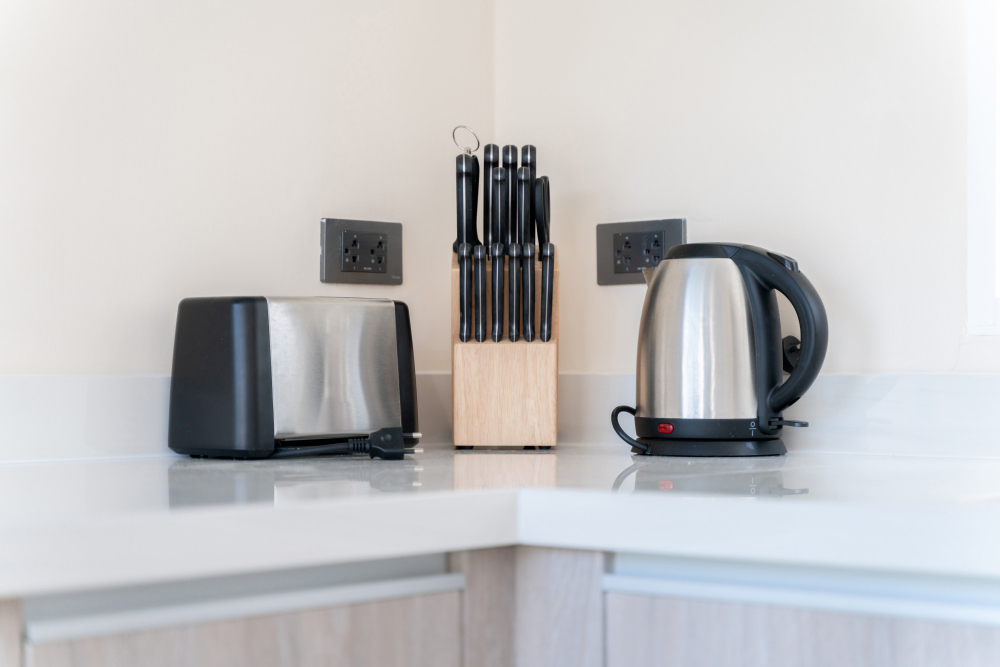
Countertop blocks can add a touch of elegance to your kitchen decor, especially if you choose one made from high-quality materials like wood or stainless steel. However, they do take up valuable counter space and can make it difficult to access other items nearby.
On the other hand, in-drawer knife storage is a great option for those who want their knives out of sight but still easily accessible. This method also frees up countertop space for other kitchen essentials like cutting boards or small appliances.
Ultimately, the decision between in-drawer and countertop knife storage will depend on your personal preferences as well as practical considerations such as safety concerns and available space. Whatever you choose though – make sure that both aesthetics & accessibility are taken into account!




